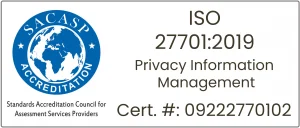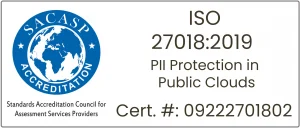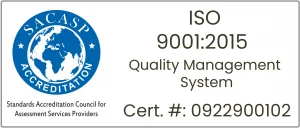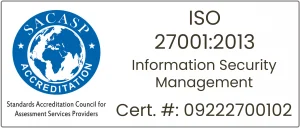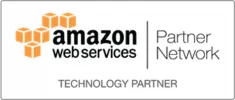The demand for faster and more secure cross-border payment systems keeps increasing in the age of globalisation. Traditionally, the process of developing a cross-border remittance product required substantial investments, infrastructure upgrades, and adherence to development timelines. Establishing physical branches and networks in numerous countries was frequently necessary, resulting in significant financial and temporal investments. In addition to technological advancements, scaling and adaptability constituted further obstacles for conventional systems. As these legacy systems were rigid, maintaining them was equally challenging and expensive.
Remittance Technology as a Service (RTaaS) has become an important development, radically changing the structure and operation of remittance solutions. This blog provides a comprehensive analysis of RTaaS, explaining its advantages, and prospects, as well as its ability to address the shortcomings of traditional approaches.
Challenges and Risks on Building Indigenous Remittance Application
Big Investments
Building a new remittance product requires major resource and infrastructural investments from financial institutions or technology businesses. Startups or small firms that have limited capital may find these investments challenging.
Lengthy Development Phase and Lack of Industry Expertise
From idea to implementation, it can take months or years for product development. Also, it requires ample industry expertise to cover all the nuances of the remittance operations in the application that would simplify and automate the remittance operations. Delays in development and lack of expertise can impede market entry and set businesses from offering the right solution to clients.
Scalability and Progress
Increasing transaction volumes and technology advancements necessitate remittance products to be scalable. Traditional methods could pose scalability concerns, leading to delays, slower processing, and dissatisfied customers. Companies with limited development resources struggle to stay up with remittance industry advancements.
Maintenance
Maintaining and improving a remittance platform takes time, money, and skill. Fixing bugs, security potholes, regulatory changes, and integrating new features requires regular maintenance. For seamless operations and competitive advantage, companies must allocate significant resources.
Security
Transaction security is a major issue in remittances. Fraud, unauthorised access, and data theft can occur in traditional remittance systems posing a threat to customers’ data.
Remittance Technology as a Service
To deal with the risks and challenges associated with traditional remittance techniques, Remittance Technology as a Service (RTaaS) provides a groundbreaking solution. By using existing remittance infrastructure and technology providers, organisations can avoid costly investments and protracted development. RTaaS suppliers offer APIs, white-label solutions, and customisable platforms that allow businesses to establish remittance products quickly.
Benefits of RTaaS over Traditional Systems
Cost-Effective:
RTaaS saves businesses from the high upfront costs of developing a remittance platform. They can better organise resources by choosing a subscription model or pay-per-use plan.
Faster Time to Market:
RTaaS speeds up remittance product development. Businesses can accelerate their entry into the remittance industry by leveraging pre-built infrastructure and APIs for customisation and go-to-market strategies.
Scalability and Advancements:
RTaaS providers present scalable infrastructure to handle rising transaction volumes. They stay updated with technology and compliance regulations so that the money transfer operators can utilise the latest features and advancements without developing and maintaining them.
Maintenance and Support:
RTaaS providers take care of all the heavy loads in terms of technology, security, compliance, IT infrastructure, API services and remittance operations as well, letting businesses focus on their strengths.
Improved UX: Convenience and Accessibility
Sending money abroad should not be a struggle. A better remittance product should be simple, fast, and reliable. RTaaS providers can achieve these with their industry expertise and considering the feedback from their customers.
Strong Security: Transaction Protection
RTaaS providers employ advanced encryption, multi-factor authentication, and a vigilant transaction monitoring system to ensure the funds are transferred securely and confidentially, prioritising the protection of sensitive data.
The Significance of a Strong Tech Stack under RTaaS
Fintech companies are at the forefront of financial innovation, offering cutting-edge remittance solutions built with the latest technologies and industry best practices. By choosing a fintech partner, you gain access to:
Preferred Payment Methods
The tech stack includes support for various payment methods such as bank transfers, digital wallets, card payments, and mobile money to cater to diverse customer preferences.
The Omnichannel Experience
A well-designed tech stack lets remittance service providers offer an omnichannel experience, enabling users to initiate and track transactions via mobile apps, websites, and social media. Regardless of channel, customers have a uniform and easy payment journey.
Data Analytics and Reporting
Advanced data analytics techniques help remittance service providers understand client behaviour, transaction patterns, market trends, and operational performance. These insights help them make data-driven decisions and develop personalised products.
Payment Reconciliation
Payment reconciliation is automated by a comprehensive technological framework that cross-references transaction data to account for all payments, streamlining reconciliation, reducing errors, and freeing up manual labour.
Compliance Management
RTaaS providers incorporate AML, CTF and KYC features that simplify customer onboarding, verification, and monitoring and assure high-security transactions. RTaaS providers can gain consumer trust by integrating compliance management into their technical platform.
Customer Onboarding
Automating document verification, identity validation, and compliance checks streamlines customer onboarding with an efficient algorithmic base in RTaaS. This lowers client time and effort and improves onboarding.
Tracking Transactions
Real-time transaction monitoring techniques discover suspicious patterns and activity. RTaaS providers enable this feature to protect consumers’ finances and preserve trust by quickly recognising and preventing fraudulent transactions.
Microservices
Microservices architecture breaks down big applications into smaller, independent components, making it popular in the remittance sector. These microservices can be designed, deployed, and scaled separately, increasing resilience, modularity, and smooth integration of Remittance solutions.
Price Comparison Tools
Remittance service providers can improve transparency by integrating price comparison tools into their tech stack, allowing customers to compare exchange rates, fees, and offerings of various providers. This empowers customers and boosts remittance competition.
Incident Management
Effective incident management is part of a strong IT stack Offered under RTaaS. By quickly fixing system failures, security breaches, and service outages, remittance service providers may minimise user impact and retain their credibility.
APIs
RTaaS providers can link with third-party partners such as FX, AML/KYC, payment gateways, payouts, banks, and other payment networks using APIs, facilitating interoperability and extending the platform’s functionalities.
Cloud Infrastructure
Remittance service providers easily handle rising transaction volumes and adapt to market demands by leveraging the cloud infrastructure offered under Remittance Technology as a Service (RTaaS), which provides scalability, dependability, and flexibility.
Fintech Marketplace Integrations offered under RTaaS
Digital Wallet: Boosting Access and Ease
As RTaaS providers connectwith digital wallets, customers may easily store and transfer funds. By using this technology, people can send and receive money from anywhere, bypassing banks. Users can manage their finances on their own with RTaaS and digital wallets.
Forex: Competitive Exchange Rates
Optimising FX integration is crucial for the remittance business. , Most of the RTaaS providers offer currency conversion (FX) feeds as a part of their services. RTaaS provides real-time, near-real-time exchange rates from trustworthy FX platforms, allowing consumers to transfer money across multiple currencies without losing money. This integration streamlines cross-border transactions, improving remittance efficiency and costs.
KYC/AML: Promoting Security and Compliance
As financial institutions prioritise KYC and AML standards, RTaaS providers deliver automated KYC/AML services to reduce fraud. Implementing reliable identification verification systems ensures secure and compliant transactions, strengthening the faith of users and regulators.
Payment Gateway: Effortless Transactions
RTaaS providers offer pre-integrated payment gateway along with the remittance platform enabling seamless transaction. This integration allows quick fund verification, decreasing delays and transaction failures. Remittance services are more efficient using RTaaS’s secure payment infrastructure.
Payouts and Settlements: Streamlining Cross-Border Transactions
Remittance Technology as a service enables easy integration with existing financial infrastructure, allowing for streamlined payouts and settlements. Modern technologies and payment gateways allow service providers to protect and streamline cross-border transactions, offering a user-friendly experience.
AML-CTF Compliance: Promoting Safety and Security
Remittance Technology as a service prioritise AML-CTF compliance to ensure the safety and security of each transaction. These services establish a secure environment that protects against illicit financial activities by employing stringent identity verification protocols, monitoring transactions, and complying with international standards.
Addressing Compliance and Regulatory Concerns with RTaaS
RTaaS providers well understand the regulatory landscape and implement robust AML/KYC procedures, data privacy regulations and cross-border regulations. RTaaS providers would have a strong compliance infrastructure by partnering with compliance experts and technology providers can educate the remittance business staff. RTaaS can proactively anticipate the compliance regulations and offer future-proof compliance framework for resilient remittance operations.
Future Outlook of RTaaS
The prospect of RTaaS in is quite promising. The emerging technologies such as Blockchain, Ripple (XRP), and Central Bank Digital Currencies (CBDCs) are drastically transforming the remittance sector. Blockchain, the distributed ledger technology, promotes speedier transactions and saves costs by offering increased security, transparency, and immutability. XRP, a digital asset issued by Ripple, encourages real-time international transactions. By providing immediate, low-cost transactions backed by central banks, central bank digital currencies reshape the remittance paradigm. In the realm of RTaaS, these technologies offer fresh opportunities for collaboration and innovation. By using RTaaS, businesses may preserve a competitive edge in the dynamic landscape of cross-border payments.
Revolutionising Remittance: How NetRemit is Redefining RTaaS
Remittance Technology as a Service (RTaaS) is our unique offering from Macro Global, streamlining cross-border remittance processes, reducing costs, and improving customer experience with NetRemit. We handle all technological and compliance aspects, enabling you to focus on seamless operations.
NetRemit’s Remittance Technology-as-a-Service is proud to bring the following offerings to financial institutions to promote empowering cross-border payments.
- MG Consulting Services provides extensive SME consulting services, including gap analysis, system architecture planning, and go-to-market strategy.
- MG Corporate Services expands cross-border remittance services to corporates of any size, handling large inward and outward bulk payments and transactions.
- Business Process Outsourcing helps businesses drive their value and growth by using intelligence, innovation, and deep industry experience.
- Legacy Migration Support simplifies the strategy of transforming legacy systems into NetRemit’s leaner, more agile software.
- Cloud Managed Services offer unmatched cloud deployment experience, backing up data on multiple BCP availability zones with business continuity strategies.
- Well-designed CGI gateway facilitates two-way communication between your primary banking platform and your remittance platform, while also providing robust error handling, reconciliation, and reposting functionalities.
- Compliance Management monitors and manages compliance obligations for financial institutions to achieve key objectives in line with the client’s GRC benchmark.
- Under the UTS program, we provide cost-effective API integrations for FX, Payment Gateway, Payouts, SMS, AML/KYC, and fraud screening services, catering to diverse financial needs and preferences, and enhancing customer satisfaction.
- Smart customisation allows businesses to maximise their collection of financial services and gain value from market-leading international payments software.
Ready to get started?
We can’t wait to show you what’s possible with NetRemit.
Related Posts
Revolutionising Remittance: How NetRemit’s Promotion Management Drives Loyalty and Growth
NetRemit empowers remittance businesses to boost growth and build lasting customer loyalty through seamless promotion management. Know how!
How Smaller Money Transfer Operators Can Thrive in International Remittance Landscape
Explore smart strategies and tech-driven solutions for small MTOs to establish leadership and dominate the competitive international remittance market.
Powering the Gig Economy with Instant Cross-Border Payments
See why instant cross-border payments are essential for the gig economy, eliminating delays, high fees, and inefficiencies while boosting global workforce efficiency.

